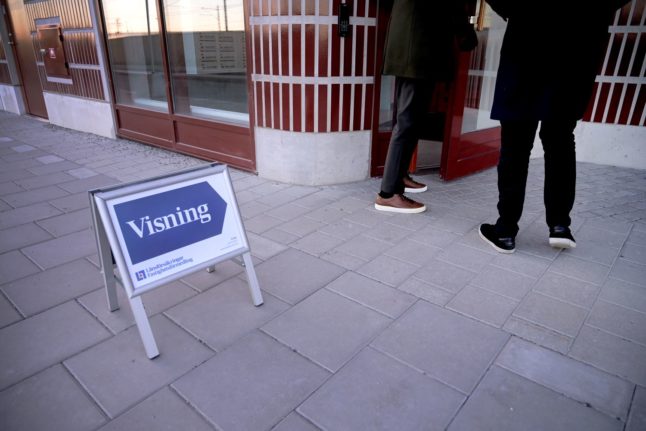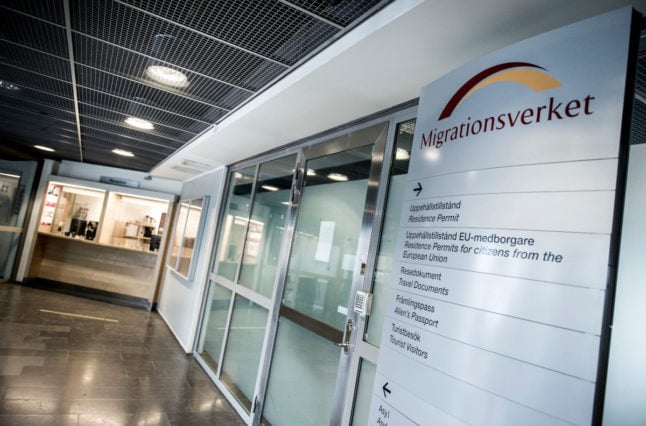For young adults earning around 28,000 kronor, it takes around 3-5 years to save up enough money for a deposit on a small apartment in one of Sweden’s major cities, a new report by Handelsbanken states, which is roughly the same amount of time as it took in 2013.
This is partly due to the fact that the price of smaller apartments has remained relatively stagnant, with one room apartments going for roughly the same price now as they did in 2016, as well as the fact that average salaries and prices for small apartments have both increased at the same rate.
Having said that, other factors have made it more difficult for newcomers to break into Sweden’s housing market, and prospective buyers now need to earn more than Sweden’s median income in order to afford a small apartment in the capital, according to the report.
One of these factors is changes to legislation governing the rules under which mortgages can be awarded, which was designed to lower the amount of debt taken on by Swedish households.
In 2010, a rule was introduced which required prospective buyers to have a deposit of at least 15 percent of a property’s asking in order to qualify for a loan. Mortgage rules were further tightened up by two amortisation requirements, introduced in June 2016 and March 2018.
The first of these new requirements introduced compulsory amortisation of between one and two percent per year for anyone borrowing more than half the value of their home, while the second introduced a further one percent amortisation requirement for any households borrowing more than 4.5 times their yearly income.
This means that prospective buyers with a deposit of less than 30 percent the value of their property and a home worth more than 4.5 times their yearly income have since 2018 had to pay off 3 percent of their mortgage per year, while buyers in the same situation in 2010 could have chosen to only pay interest.
Although the amortisation requirements have successfully lowered the amount of debt taken on by new buyers, they also mean that buyers need to earn more in order to have enough money to qualify for a loan.
“On the one hand, the rules have led to young people taking on less debt than otherwise, but on the other hand, it’s been more difficult for them to be granted a mortgage,” the Handelsbanken report reads.
“This means that more young people in practice are locked out of the home ownership market and can be forced into the expensive second-hand rental market, as first-hand contracts on rental properties are difficult to come by,” it adds.
Although the report focuses on young people in Sweden, many of the same issues are also faced by newer immigrants to Sweden regardless of age, such as struggling to find cheaper rental properties due to the long waiting times for rental queues, or having less savings due to using the money for other costs, such as those related to moving countries or paying international student fees, for example.
Additionally, the 3-5 year estimate for the time taken to save up money for a deposit is based on a young person saving 25 percent of their income in order to buy a small one or two room apartment – with expensive second-hand lets eating into disposable incomes and saving capabilities, saving up for a deposit takes longer, even for those who earn close to the Swedish median income.
For families who are less able to buy cheaper one or two room apartments, the time to save up a deposit is even higher, as prices for larger apartments have risen by more than smaller apartments and it may not be possible to spare as much as 25 percent of the family’s monthly income after all other costs are paid.
A young adult aged 25-29 years old earning the median salary – around 28,000 kronor in this example – can, according to Handelsbanken’s calculations, buy a property worth just under 1.6 million kronor. That’s enough for a one room apartment in Skåne (average price around 1.2 million) or Västra Götaland (1.5 million), but not enough for a one room apartment in Stockholm, which costs on average 2.4 million kronor.
In 2013, the same person would have been able to buy a property worth slightly over 1.6 million kronor on a monthly salary of just under 20,500 kronor.
In order to buy a one room apartment alone in Stockholm in 2023 the individual in the example would need to have a salary of over 40,000 kronor, which is far above the average salary for most people in this age bracket.



 Please whitelist us to continue reading.
Please whitelist us to continue reading.
Member comments